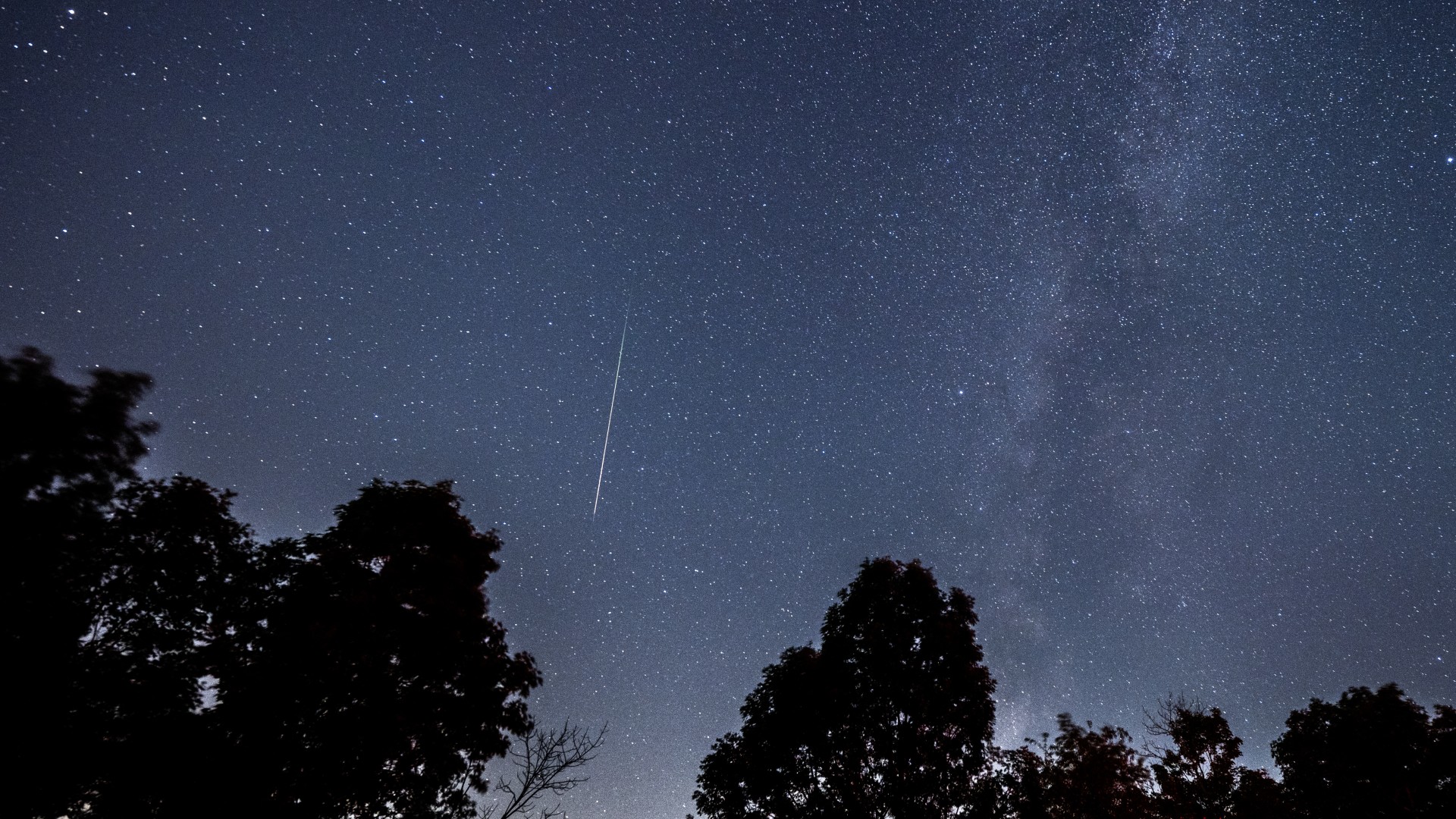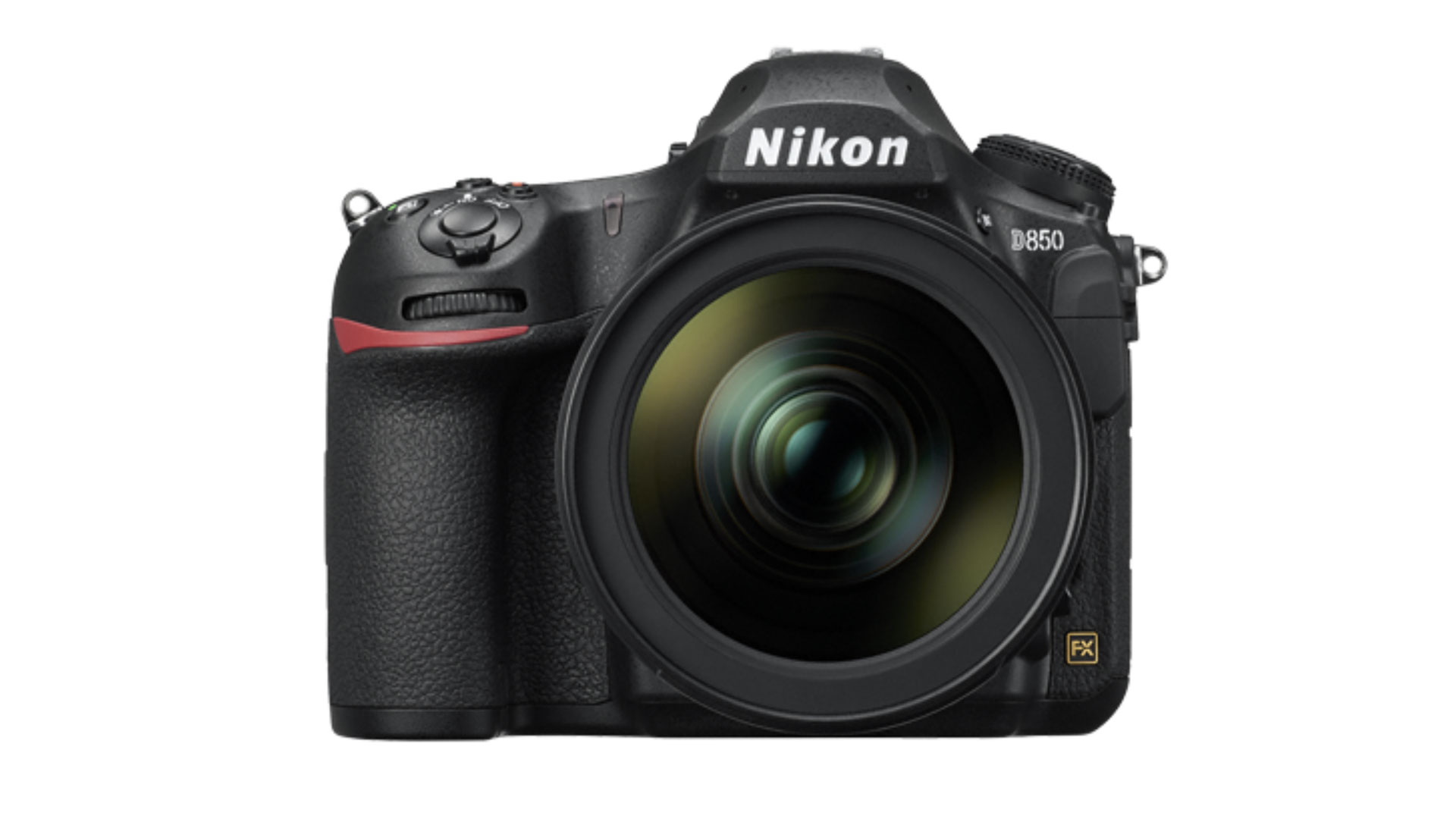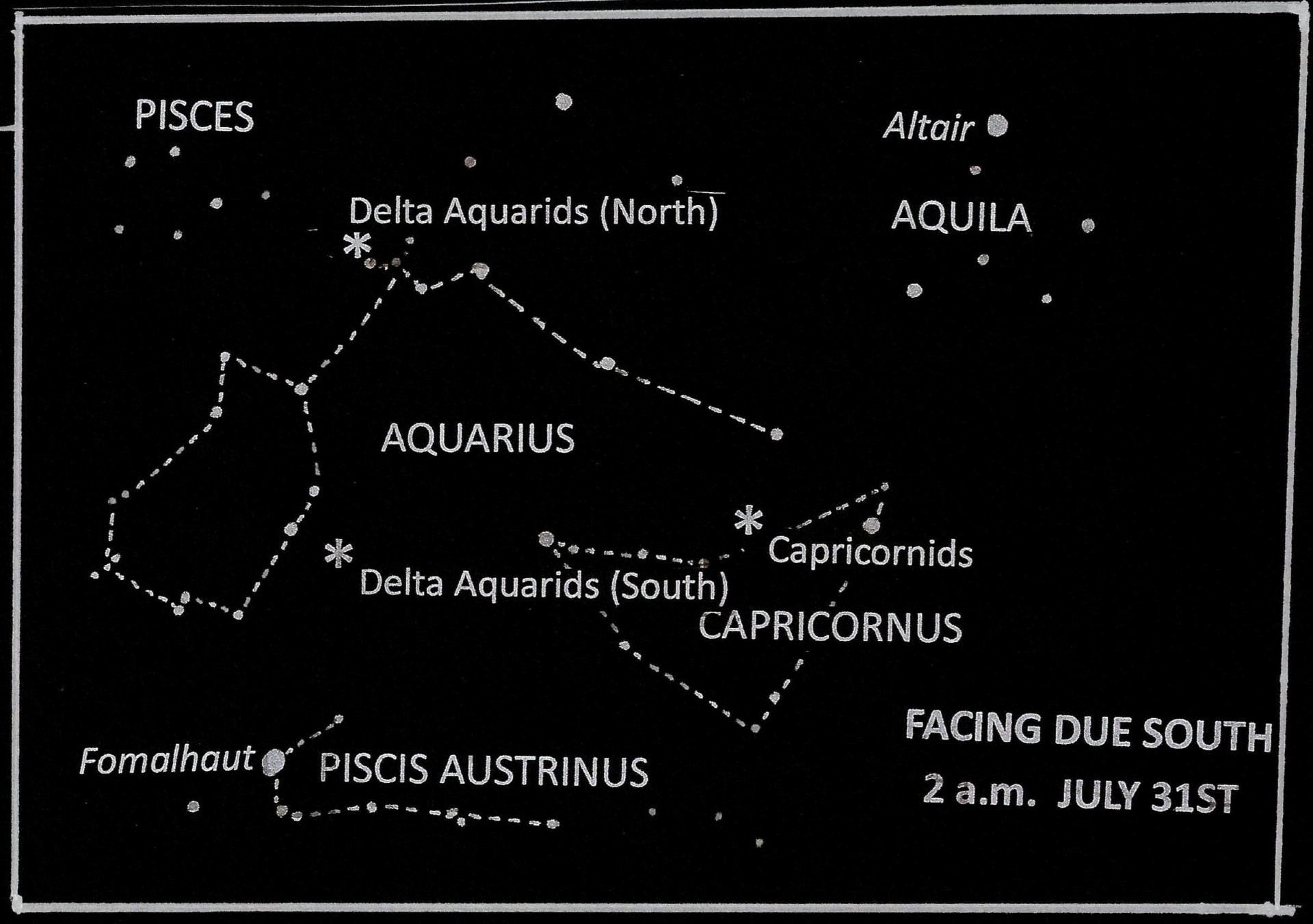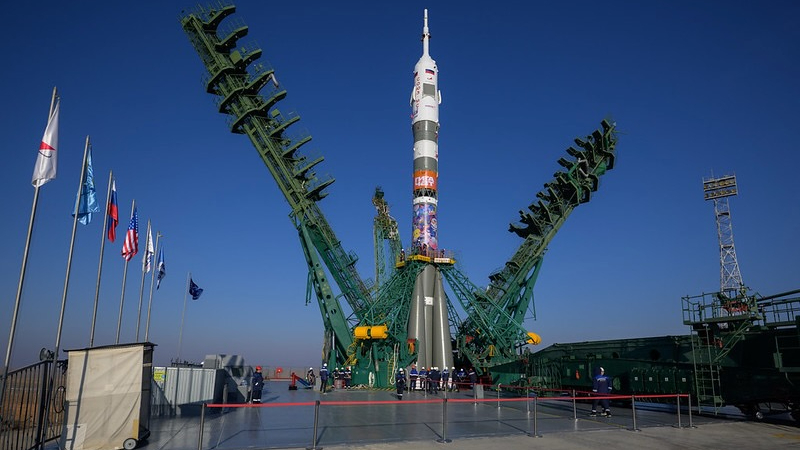The Perseid meteor shower kicks off summer 'shooting star' season this week. Here's how to see it
The first of our showers is the Delta Aquarids, with a broad three-day maximum running from July 29 through 31.

Each summer, amateur astronomers from all over the world look forward to observing the famous Perseid meteor shower, but often overlook four lesser showers that reach their peak between July 29 and Aug. 16.
This year, a waning gibbous moon three days past full moon phase will seriously hamper the Perseid meteor shower, so why not take this opportunity to try and view the other four, all but one of which will enjoy dark skies?
Summertime meteors, occasionally flitting across your line of sight, are especially noticeable between early-July and the final week of August. And between Aug. 3 and 15, there are no fewer than four different minor displays (in addition to the Perseids) that are active.
Anyone gazing at the night sky these nights for even a short length of time is likely to spot a few "shooting stars" darting across the sky. In general, Earth encounters richer meteoric activity during the second half of the year. And you're more likely to see twice as many meteors per hour in the predawn hours as compared to the evening hours. This is due to the fact that during the pre-midnight hours we are on the "trailing" side of Earth, due to our orbital motion through space.
So, any meteoric particle generally must have an orbital velocity greater than that of Earth's to "catch" us. However, after midnight, when we are turned onto Earth's "leading" side, any particle that lies along Earth's orbital path will enter our atmosphere as a meteor.
As such objects collide with our atmosphere at speeds of 7 to 45 miles (11 to 72 km) per second, their energy of motion rapidly dissipates in the form of heat, light, and ionization, creating short-lived streaks of light popularly referred to as "shooting stars."

If you're looking for a good camera for meteor showers and astrophotography, our top pick is the Nikon D850. Check out our best cameras for astrophotography for more and prepare for the Perseids with our guide on how to photograph a meteor shower.
The only equipment you'll need is your eyes and a modest amount of patience. The actual number of meteors a single observer can see in an hour depends strongly on sky conditions. The rates given in the table are based on your ability to see stars as faint as magnitude +6.5 — considered to be the threshold of naked eye visibility — that you are an experienced observer, and an assumption that the radiant is directly overhead. The radiant is the place in the sky where the paths of shower members, if extended backward, would intersect when plotted on a star chart. Your clinched fist held at arm's length is equal to roughly 10 degrees in the sky. So, if the radiant is 30 degrees ("three-fists") above the horizon, the hourly rate is halved; at 15 degrees it is cut to a third.
Breaking space news, the latest updates on rocket launches, skywatching events and more!
Of the four minor showers active in the coming weeks, the Kappa Cygnids are the most favorably placed for northern observers: the constellation of Cygnus from where these meteors appear to dart from, lies high overhead at around 10:30 p.m. making it favorably placed for viewing all night long. Two of the other showers listed come from the region around the constellations of Aquarius and Capricornus. These constellations are currently highest in the southern sky between roughly 1:30 and 2:30 a.m. local daylight time.
While the hourly rates from the four minor meteor streams are but a fraction of the numbers produced by the Perseids, combined, overall, they provide a wide variety of meteors of differing colors, speeds and trajectories.
These four are listed in the table below:
Shower name | Period of visibility | Peak date | Hourly rate | Remarks |
|---|---|---|---|---|
Delta Aquarids | July 12 - Aug. 23 | July 29-31 | 25 | Swift, faint, yellow-white. |
Alpha Capricornid | July 3 - Aug. 15 | July 31 | 5 | Slow, bright, a few fireballs. |
Eta Eridanids | July 31 - Aug. 19 | Aug. 7 | 3 | Moderately bright, swift speed |
Kappa Cygnids | Aug. 3 - Aug. 28 | Aug. 16 | 3 | Slow moving, sometimes flaring fireballs |
The first of our showers is the Delta Aquarids, with a broad three-day maximum running from July 29 through 31. though activity has been noted as early as July 12, extending to Aug. 23. This shower actually is composed of two radiants, one north and the other south, suggesting that we are seeing two distinct streams of celestial debris burning up in Earth's atmosphere. As many as two dozen swift, faint meteors per hour are provided by this shower.
The moon will be at a waxing crescent phase during the time of peak activity and will set well before midnight; hence it's well out of the picture when the double radiant crosses the meridian at about 2:30 a.m., meaning favorable viewing circumstances throughout the morning hours. The pieces of space debris that interact with our atmosphere to create the southern Delta Aquariids are suspected to originate from comet 96P/Machholz. This short-period comet orbits the sun about once every five years. Comet Machholz was discovered by the late Donald Machholz in 1986.
A much weaker shower is the Alpha Capricornids, which begin about July 3, peaks on July 31, and ends on Aug. 15. Moonset comes at 11:00 p.m. on the evening of July 30, and the time when the radiant crosses the meridian comes at 1:30 a.m., which means that this stream is well-presented this year and also overlaps with the peak of the Delta Aquarids.

Though averaging only around 5 per hour, the Alpha Capricornids frequently produce bright yellow fireballs that can be quite spectacular. These meteors are the dross shed by the comet 169P/NEAT, whose path Earth crosses at this time each year.
The last minor shower before the Perseids is the Eta Eridanids, having detectable members from July 31 to Aug. 19. At peak activity on Aug. 7 the moon will not set until 3:30 a.m. as the radiant is gaining altitude in the southeast; dawn breaks an hour later, leaving little time for observing. Only about three members per hour are seen under good conditions. These meteors appear to be related to a trail of dust shed by a faint comet traveling in a parabolic orbit that was observed through telescopes between May and June 1852. by French astronomer, Jean Chacornac.
A waning gibbous moon (19 days old) will dominate morning skies on Aug. 12 to spoil the Perseids. The radiant, near the famous Double Star Cluster of Perseus, rises in the evening and is 70 degrees high in the north-northeast at the break of dawn. When maximum occurs in a dark sky, this rich stream averages more than 90 members per hour, though higher rates have been seen on occasion. Many flaring meteors with trains are seen under good skies, but only the brightest of them will be visible in 2025. This shower normally extends from July 17 through Aug. 24.
The last summer shower is the Kappa Cygnids (followed by the Orionids in the last half of October). The limits of this shower run from Aug. 3 to 28, with the peak on Aug. 16. Though the maximum is only three per hour, the stream does provide flaring fireballs and the careful observer may be nicely rewarded for the time spent. At 24 days in age, the waning crescent moon will come up at 11:45 p.m., but the hours before midnight are the ones to choose for this shower. The radiant passes almost directly overhead at 10:30 in the evening.
Our data is based on two sources: The international Meteor Organization (IMO) Meteor Shower Calendar for 2025, compiled by Jürgen Rendtel and the Meteor section of the 2025 Observer's Handbook of the Royal Astronomical Society of Canada, compiled by Margaret Campbell-Brown and Peter Brown.
We will have more to say about the Perseids in early August, so be sure to stay tuned to Space.com for further details.
Joe Rao serves as an instructor and guest lecturer at New York's Hayden Planetarium. He writes about astronomy for Natural History magazine, Sky and Telescope and other publications.

Joe Rao is Space.com's skywatching columnist, as well as a veteran meteorologist and eclipse chaser who also serves as an instructor and guest lecturer at New York's Hayden Planetarium. He writes about astronomy for Natural History magazine, Sky & Telescope and other publications. Joe is an 8-time Emmy-nominated meteorologist who served the Putnam Valley region of New York for over 21 years. You can find him on Twitter and YouTube tracking lunar and solar eclipses, meteor showers and more. To find out Joe's latest project, visit him on Twitter.
You must confirm your public display name before commenting
Please logout and then login again, you will then be prompted to enter your display name.
